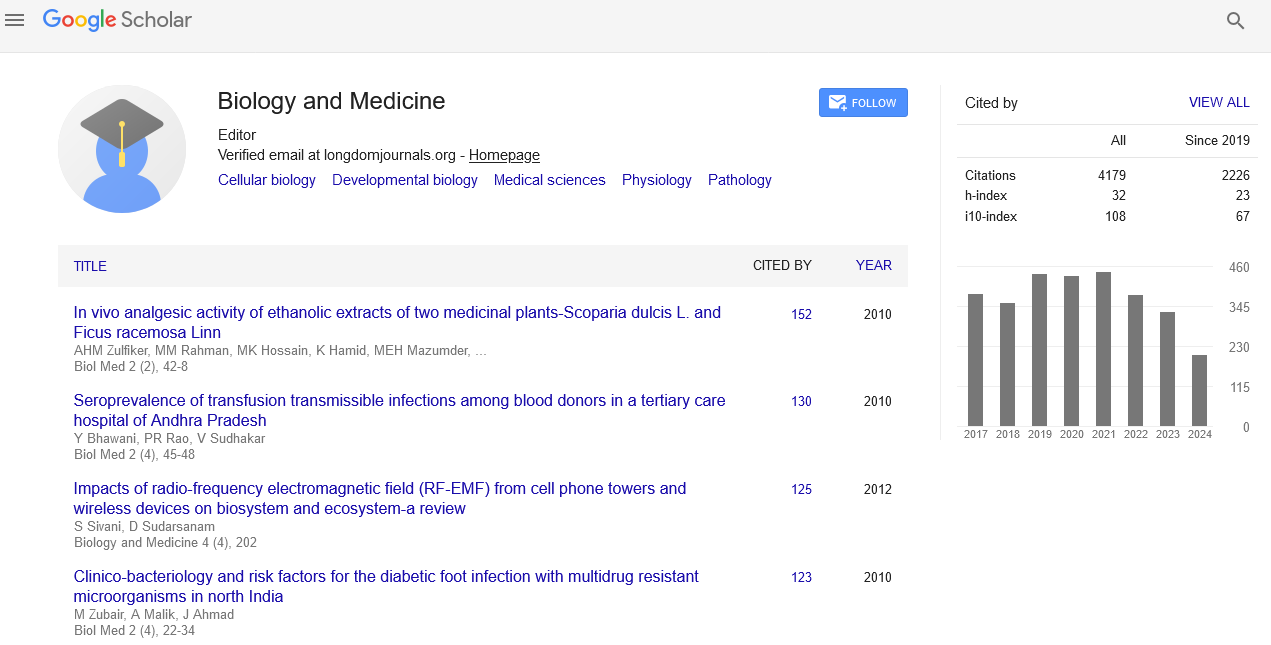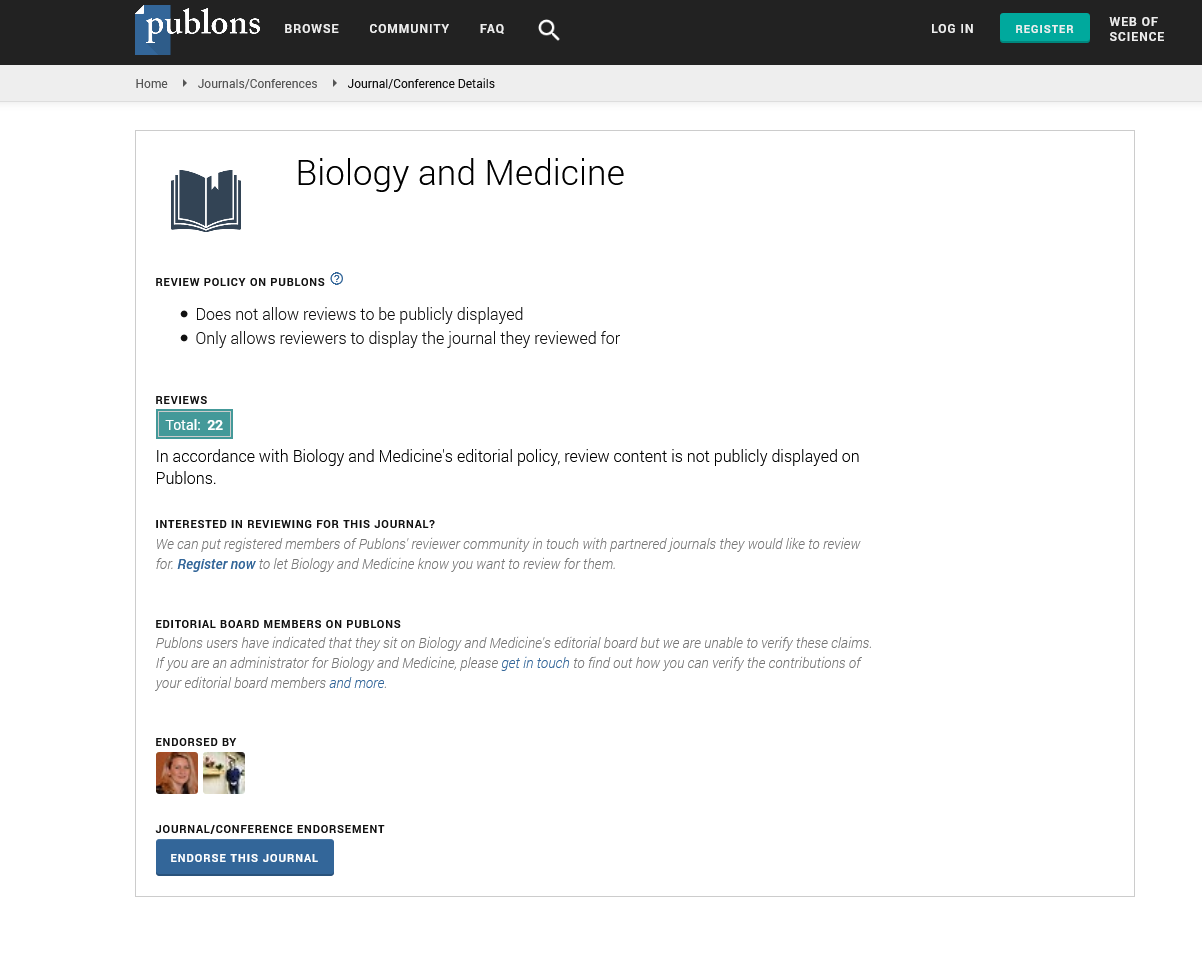Indexed In
- Open J Gate
- Genamics JournalSeek
- CiteFactor
- Cosmos IF
- Scimago
- Ulrich's Periodicals Directory
- Electronic Journals Library
- RefSeek
- Hamdard University
- EBSCO A-Z
- Directory of Abstract Indexing for Journals
- OCLC- WorldCat
- Proquest Summons
- Scholarsteer
- ROAD
- Virtual Library of Biology (vifabio)
- Publons
- Geneva Foundation for Medical Education and Research
- Google Scholar
Useful Links
Share This Page
Journal Flyer

Open Access Journals
- Agri and Aquaculture
- Biochemistry
- Bioinformatics & Systems Biology
- Business & Management
- Chemistry
- Clinical Sciences
- Engineering
- Food & Nutrition
- General Science
- Genetics & Molecular Biology
- Immunology & Microbiology
- Medical Sciences
- Neuroscience & Psychology
- Nursing & Health Care
- Pharmaceutical Sciences
Short Communication - (2024) Volume 16, Issue 7
Systemic Lupus Erythematosus: Exploring its Pathogenesis, Clinical Features and Therapeutic Approaches
Ufaque Batool Samo*Received: 24-Jun-2024, Manuscript No. BLM-24-26735; Editor assigned: 26-Jun-2024, Pre QC No. BLM-24-26735 (PQ); Reviewed: 10-Jul-2024, QC No. BLM-24-26735; Revised: 17-Jul-2024, Manuscript No. BLM-24-26735 (R); Published: 24-Jul-2024, DOI: 10.35248/0974-8369.24.16.703
Description
Systemic Lupus Erythematosus (SLE) is an autoimmune disorder, a multisystem autoimmune disease includes immunological complex deposition, persistent inflammation in the traditional target organs the skin, joints and kidneys. However, in people with SLE the immune system produces autoantibodies that target and destroy healthy cells and tissues. This immune response leads to chronic inflammation and damage to various organs [1,2].
The effects of SLE remains high even with significant advancements in diagnosis and treatment. To enable early patient referral and diagnosis, it is important to understand typical presentations and the diagnostic process. The majority of patients appear with constitutional, mucocutaneous, and musculoskeletal symptoms initially; these symptoms may include myalgia, exhaustion, mouth ulcers, alopecia, joint pain and rash specific to lupus. The most recent classification criteria, a diagnostic strategy for symptoms of SLE includes an organised assessment of clinical manifestations (weighted within each domain) and autoantibody profiles (such as anti-Sm, anti-doublestranded DNA, antiphospholipid, or hypocomplementaemia antibodies) [3]. Individualised lifestyle interventions and patient education are used in non-pharmacotherapy management to enhance quality of life and medication adherence (e.g., hydroxychloroquine or immunosuppressant). A few significant advancements in lupus nephritis and SLE treatments have been made in the past ten years, including belimumab, anifrolumab and voclosporin. The disease progression is still unpredictable and the death rate is too high. Different parts of the world have imposed restrictions on access to these pricey treatments. Vigilant prevention and management measures are required for comorbidities resulting from both disease activity and medication adverse effects, particularly infections, osteoporosis and cardiovascular disease. Priority areas of managing SLE include balancing treatment-related comorbidities and customising therapy options to achieve remission.
The pathogenesis of SLE is complex and involves multiple factors. Genetic predisposition plays a significant role, as several genes associated with the immune system have been linked to the disease. Environmental factors, such as Ultraviolet (UV) light exposure, infections and certain medications, can trigger the onset or exacerbation of SLE symptoms. Hormonal influences, particularly estrogen, are also thought to contribute to the higher prevalence of SLE in women [4,5].
The clinical presentation of SLE is highly variable, with symptoms ranging from mild to severe. The disease can affect virtually any organ system, leading to a wide array of symptoms. Common manifestations include fatigue, joint pain and swelling, skin rashes (especially the characteristic "butterfly" rash on the face), fever, and photosensitivity. Some patients may experience more severe complications, such as kidney inflammation (lupus nephritis), neurological symptoms (seizures, psychosis), and cardiovascular issues (pericarditis, myocarditis) [6]. The chronic nature of SLE, combined with its unpredictable course, can significantly impact a patient's quality of life. Flares, periods when symptoms worsen are common and can be triggered by various factors, including stress, infections and exposure to sunlight.
Diagnosing SLE can be challenging due to its diverse and nonspecific symptoms. There is no single test to confirm the disease, so diagnosis often involves a combination of clinical evaluation, laboratory tests and imaging studies. Laboratory tests play an important role in diagnosing SLE and assessing disease activity. ANA is the most common autoantibody found in SLE patients, present in more than 95% of cases [7,8]. Other specific autoantibodies, such as anti-double-stranded DNA (anti-dsDNA) and anti-Smith (anti-Sm) antibodies are also associated with the disease and can help confirm the diagnosis. Additionally, blood tests may reveal anemia, leukopenia, thrombocytopenia, and elevated markers of inflammation, such as Erythrocyte Sedimentation Rate (ESR) and C-reactive protein (CRP). There is no cure for SLE, but with appropriate treatment many patients can manage their symptoms and prevent serious complications. The treatment approach for SLE is individualized, depending on the severity of the disease and the specific organs involved. The primary goals of treatment are to control inflammation, prevent flares and minimize organ damage [9,10].
References
- Barber MR, Drenkard C, Falasinnu T, Hoi A, Mak A, Kow NY, et al. Global epidemiology of systemic lupus erythematosus. Nat Rev Rheumatol. 2021;17(9):515-532.
- Barbhaiya M, Hart JE, Malspeis S, Tedeschi SK, VoPham T, Sparks JA, et al. Association of ultraviolet B radiation and risk of systemic lupus erythematosus among women in the Nurses’ Health Studies. Arthritis Care Res. 2023;75(7):1409-1415.
- Blaess J, Goepfert T, Geneton S, Irenee E, Gerard H, Taesch F, et al. Benefits & risks of physical activity in patients with Systemic Lupus Erythematosus: A systematic review of the literature. Semin Arthritis Rheu. 2023;58(152128).
- Blazer A, Dey ID, Nwaukoni J, Reynolds M, Ankrah F, Algasas H, et al. Apolipoprotein L1 risk genotypes in Ghanaian patients with systemic lupus erythematosus: A prospective cohort study. Lupus Sci Med. 2021;8(1):000460.
- Bruce IN, Buie J, Bloch L, Bae SC, Costenbader K, Levy RA, et al. Lupus spectrum ambiguity has long-term negative implications for patients. Lupus Sci Med. 2023;10(1):000856.
- Crow MK. Pathogenesis of systemic lupus erythematosus: Risks, mechanisms and therapeutic targets. Ann Rheum Dis. 2023;82(8):999-1014.
- Dyball S, Rodziewicz M, Mendoza-Pinto C, Bruce IN, Parker B. Predicting progression from undifferentiated connective tissue disease to definite connective tissue disease: a systematic review and meta-analysis. Autoimmun Rev. 2022;21(11):103184.
- Eudy AM, Reeve BB, Coles T, Lin L, Rogers JL, Pisetsky DS, et al. The use of patient-reported outcome measures to classify type 1 and 2 systemic lupus erythematosus activity. Lupus. 2022;31(6):697-705.
- Eudy AM, Rogers JL, Corneli A, McKenna K, Maheswaranathan M, Pisetsky DS, et al. Intermittent and Persistent Type 2 lupus: Patient perspectives on two distinct patterns of Type 2 SLE symptoms. Lupus Sci Med. 2022;9(1):000705.
- Felten R, Scherlinger M, Mertz P, Chasset F, Arnaud L. New biologics and targeted therapies in systemic lupus: From new molecular targets to new indications. Jt Bone Spine. 2023;90(2):105523.
Citation: Samo UB (2024). Systemic Lupus Erythematosus: Exploring its Pathogenesis, Clinical Features and Therapeutic Approaches. Bio Med. 16:703.
Copyright: © 2024 Samo UB. This is an open-access article distributed under the terms of the Creative Commons Attribution License, which permits unrestricted use, distribution, and reproduction in any medium, provided the original author and source are credited.


